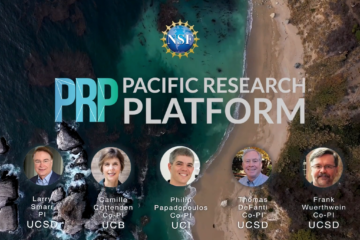Building on years of research in network engineering and data-intensive collaborative science, the Pacific Research Platform was born in 2015 with a grant from the National Science Foundation. It aimed to knit together major university research networks and supercomputing centers on the west coast as a proof of concept for how limitations of space and time could be erased by virtue of tight coordination among large-scale regional networks like CENIC and those responsible for delivering data to end-users in labs and campus offices throughout the Pacific Rim.
Six years and trillions of gigabytes later, the PRP concept has expanded to encompass a National and even Global Research Platform. As important as developments in the cyberinfrastructure and software driving it have been, equally significant are the professional relationships, field-building development for science engagement and research facilitation, and domain-specific discoveries that the PRP facilitated.


